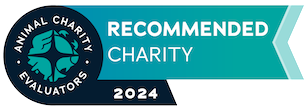Accurate Food Labelling And Perception Of Welfare
As animal advocates, we know that modern industrial animal agriculture and consumer purchasing patterns do not match consumers’ moral preferences regarding animal welfare. Many people think of themselves as supporting animal welfare but do not “put their money where their mouth is,” so to speak. Current production methods inflict a great deal of harm on animals despite widespread consumer preference for meat, dairy, and eggs that come from humanely treated animals. Judging by the premium pricing and market shares of food products with moral or special labels (e.g., “cage-free,” “free-range,” and “organic”), many consumers are willing to pay more for less harmful products, at least theoretically. We say “theoretically” because most consumers are more or less unable to determine which products match their preference.
The labels placed on animal products, and the insufficient government oversight of these labels, are significant factors in consumer ignorance. Producers are allowed to use misleading labels and thwart consumers from aligning their preferences with their purchases. Producers are allowed to label their goods as friendly to animals or the environment without actually taking action to conform to those claims. Meanwhile, producers who do invest resources into more “humane” or environmentally-conscious production methods are competing with companies that do not make similar expenditures. This article proposes a new labeling regime in which animal products feature labels that adequately inform consumers of agricultural practices so that consumers can match their purchases with their moral preferences.
In the proposed scheme, animal products would contain a label that concisely and objectively informs consumers what practices went into the making of that item. Such a scheme would enable consumers who wish to pay more for “humane” or environmentally-friendly products to do so, essentially rewarding those companies who actually do engage in what they perceive as better production methods. While the legal literature discussing food labeling and animal welfare is growing, most of the literature proposes legal definitions of terms like humane, expansion of consumer protection laws, or labeling systems in which third-parties provide grading or ranking systems for producers of animal products. This article rejects those proposals as inadequate to sufficiently inform consumers and instead suggests providing consumers with a list of select practices that producers engage in.
[Contributed by Sejal Sanghvi]

















